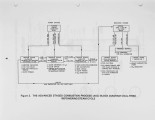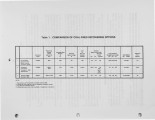| OCR Text |
Show o The ability to produce a nonleachable residue is important as more and more areas attempt to treat coal waste as a hazardous waste. The current Clean Air Act is a federal obligation, but local and state agencies can enforce more stringent guidelines. Disposal cost of leachable residue, if it is considered a hazardous waste, can go as high as $200/ton as compared to $17/ton for disposal of non leachable residues. For a 600-MW coal-fired plant burning 2.5 %-sulfur coal with 15°A, ash, there could be a 100 million dollar savings in ash-disposal costs alone for a process that produces non leachable residues. The expected overall performance from ASC retrofit is illustrated in Table 2. The performance of AFBC is also included for comparison. CASE STUDY To illustrate the use of the ASC process for coal-fired repowering, a 150-MW existing power station (Station X) was selected. This plant was typical of older pulverized coal-fired stations. The station was a four-unit plant built in the early 1950's. Each of the four units had a nominal capacity of 150 MW. Each 1,000,000-lb/h steam generator served a single 150-MW steam-turbine generator without any interconnections to other units. To perform the ASC coal-fired repowering, the first step was to remove the pulverizers, disc feeders, coal crushers, and exhausters with related pulverized-coal piping. The second step was to arrange the required partial-combustor vessels as close to the existing boiler as possible. To repower one of the units at Station X, fifteen partial combustor vessels with a 6-foot internal diameter, or seven vessels with a 9-foot diameter, were required. The installation cost of the large vessels will be lower but will require more space in front of the boiler. Because of the space limitations of the station, the 6- foot-diameter vessel configuration was chosen. These vessels were placed in two staggered rows. The first row closest to the boiler contained seven vessels, and the second row contained the remaining eight vessels. The distance between these two rows was 7-1/2 feet. This "closedpack" arrangement allowed all of the vessels to be installed in the width of the existing boiler with a column-to-column distance of 58 feet. 15 |
























